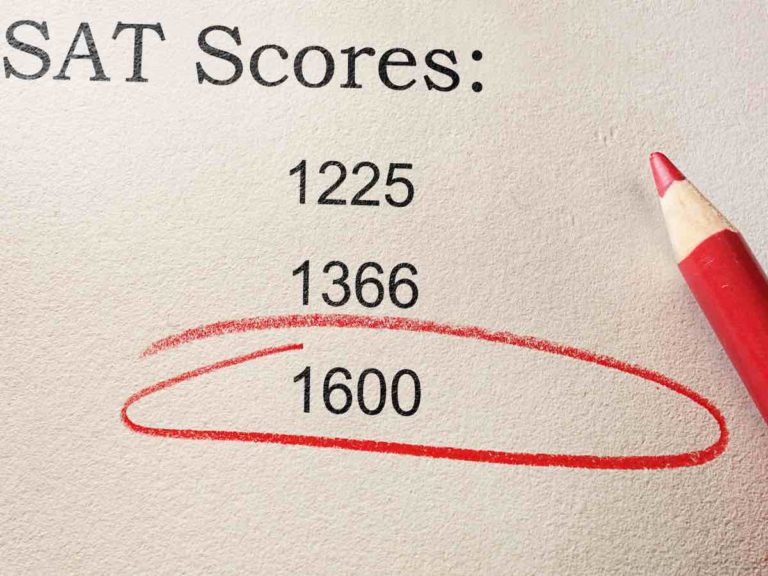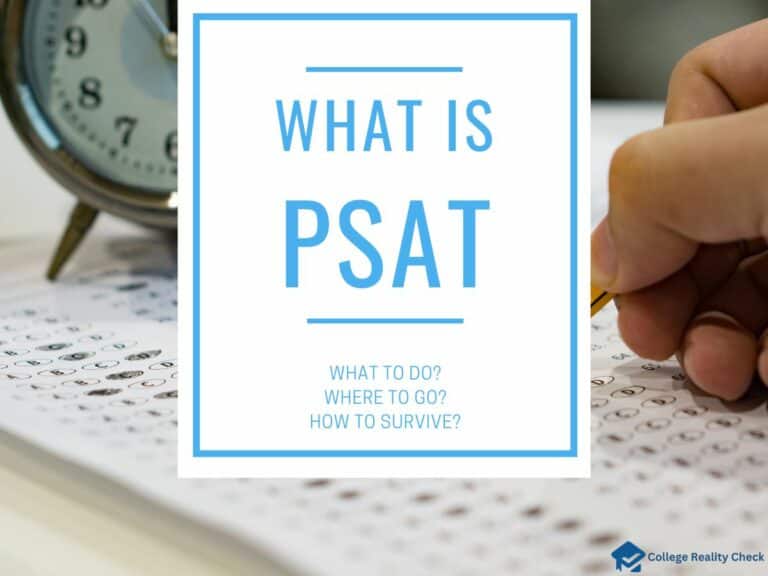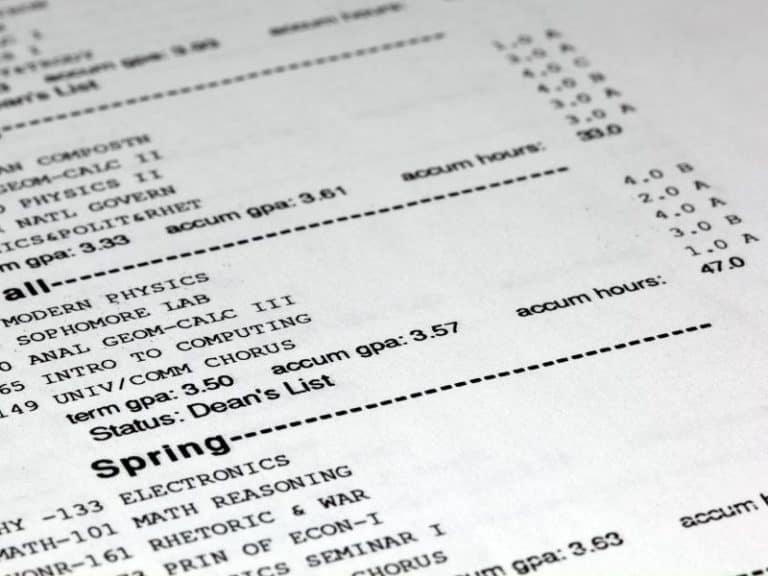Understanding the MCAT: A Comprehensive Guide
Over 85,000 medical school-bound students take the Medical College Admission Test (MCAT) each year. You may have to gear up for it anytime soon if you are planning on becoming a doctor or another medical professional someday.
The MCAT, which is administered by the Association of American Medical Colleges (AAMC), is a standardized test taken by undergraduate students who are planning on attending most medical schools in the US and Canada, too.
It’s made up of 4 different sections that test an examinee’s skills and knowledge of concepts and principles in the sciences.
Make sure that you don’t stop reading this article if you have been dreaming of being a medical student.
Is the MCAT Important for College Admissions?
The MCAT exam is an important part of admissions if the graduate school requires it. Even if an institution does not require it, chances are that it will accept the MCAT in lieu of some other standardized test.
Do You Have to Take the MCAT?
Most medical schools in the US as well as many in Canada require applicants to take the MCAT as a part of the application process. Needless to say, if a particular institution requires it, the applicant will have to sit for it.
However, a person may attend a medical school without an MCAT score through a Baccalaureate-MD program such as:
- BA/MD
- BS/MD
- BFA/MD
Can Colleges See How Many Times You Took the MCAT?
Medical schools can see how many times an applicant sat for the MCAT exam. That’s because each and every MCAT score of the examinee will appear on his or her record.
So, in other words, admissions officers at all graduate schools that the individual applies to will see all of his or her MCAT scores even without requesting them.
While it’s possible for a student who is interested in a professional program in the healthcare area to take the MCAT up to 7 times, it’s not a good idea to take the examination repeatedly — we will discuss this matter in a few, so keep reading.
What is on the MCAT?
The MCAT is a standardized test that also serves as a graduate school entrance exam. It’s divided into different sections, the number of multiple-choice questions in each varying from 53 to 59.
How Many Sections are on the MCAT?
The MCAT exam is divided into 4 different sections, and they are as follows:
- Biological and Biochemical Foundations of Living Systems
- Chemical and Physical Foundations of Biological Systems
- Critical Analysis and Reasoning Skills
The first 3 sections of the MCAT are established around the various foundational concepts in the sciences.
On the other hand, the final section of the standardized test is focused on the comprehension proficiencies of the MCAT test-taker as they relate to the humanities as well as social sciences.
As a matter of fact, the section Critical Analysis and Reasoning Skills is composed of 50% humanities and 50% social sciences.
How Many Questions is the MCAT?
There are a total of 230 questions on the MCAT exam. The first 3 sections of the test have 59 questions each, while the remaining section has only 53 questions all in all.
Let’s take a look at the breakdown of all 230 MCAT questions per section of the examination:
| Section | Number of Questions |
| Biological and Biochemical Foundations of Living Systems | 59 |
| Chemical and Physical Foundations of Biological Systems | 59 |
| Psychological, Social and Biological Foundations of Behavior | 59 |
| Critical Analysis and Reasoning Skills | 53 |
What Kind of Math is on the MCAT?
While the MCAT exam requires test-takers to do mathematical computations, there is no actual math section on the exam. Students, however, need to use their knowledge in fundamental math such as algebra and trigonometry.
Having knowledge of calculus is not necessary on the MCAT.
Subjects that require medical school-bound individuals to carry out math include chemistry and physics as well as biology which requires some statistical reasoning and data gathering.
It’s also important to note that introductory physics, which makes up 25% of the section Chemical and Physical Foundations of Biological Systems, requires some math, too.
Is There Science on the MCAT?
The MCAT exam assesses the content knowledge of test-takers in various hard sciences, which include:
- Biochemistry
- General Chemistry
- Introductory Biology
- Introductory Physics
- Organic Chemistry
Other than testing how much students know about the said subjects, the MCAT exam also evaluates reasoning and critical thinking skills on various concepts of hard sciences.
Is There Writing on the MCAT?
There is no writing section on the MCAT exam. In 2013, the AAMC removed the writing section, which was referred to as the Writing Sample, of the standardized test.
During its time as a component of the MCAT, the Writing Sample section required test-takers to develop and write 2 essays, each of which was written in response to a prompt and took 30 minutes to complete.
The essays students had to write called for a combination of both argumentative writing skills as well as expository writing skills.
The essays were evaluated based on various criteria, including the following:
- Development of a central idea
- Writing skills
- Grammar and punctuation
What is the MCAT Reasoning Test?
The reasoning component of the MCAT exam is the section referred to as Critical Analysis and Reasoning Skills.
According to the AAMC itself, the said section of the standardized test is very much like some other verbal reasoning tests that medical school applicants might have taken throughout their academic careers.
As mentioned earlier, the section Critical Analysis and Reasoning Skills has a total of 53 questions, thus making it having the least number of questions among the various MCAT sections.
How Does the MCAT Work?
Unlike most other standardized tests, the MCAT examination does not come in a paper and pencil format. Instead, the all-day test is administered on a computer whose interface is full-screen, with no title bar and others.
Due to the fact that the graduate school exam takes more than 6 hours to complete, there are optional but highly recommended breaks between sections, which brings the total length of the test to over 7 hours.
What Does the MCAT Measure?
The MCAT exam is designed to measure the knowledge of undergraduate students who are planning on applying to medical school of various natural, behavioral and social science concepts and principles.
Similarly, it evaluates various skills of theirs, including problem-solving and critical thinking skills, all of which are vital for academic success in a health-related program.
Is the MCAT Multiple Choice?
The MCAT is an exam consisting of multiple-choice questions. Unlike most other standardized tests or college entrance tests, there are no free-response questions and, as discussed earlier, a writing section on the MCAT exam.
In many instances, multiple-choice tests require students to have a sharp memory to pass.
Well, the MCAT exam is different — even though the answer to every question is already there and the test-takers simply have to select it instead of incorrect ones, MCAT exam questions are designed to require students to rely on their critical thinking, analytical, and problem-solving skills.
So, in other words, memorizing terms and concepts alone won’t do.
Each multiple-choice question on the MCAT has a total of 4 answer options. Pre-medical students sitting for the examination will be more than happy to learn that there’s no penalty for a wrong answer.
Is the MCAT a Standardized Test?
The MCAT is a standardized test that has been an important component of the medical school admissions process since the late 1920s.
It’s the examination taken by individuals who are planning on applying to a health profession institution, including those that provide the following professional programs:
- Doctor of Medicine (MD)
- Doctor of Osteopathic Medicine (DO)
- Doctor of Podiatric Medicine (DPM)
- Doctor of Veterinary Medicine (DVM)
- Other health-related programs that use MCAT results for meeting a test score admissions requirement
No matter the medical school or program, those who plan on applying must sit for the same exam with the same set of questions, which will be graded in the same manner, and that is why the MCAT exam is a standardized test.
When Do You Take the MCAT Test?
It is recommended for undergraduate students to take the MCAT exam the earliest during the latter part of their sophomore year of college or the summer between their sophomore and junior year of college.
Many, however, choose to take the graduate school entrance test in the same year that they are applying to medical school.
But, according to AAMC itself, it’s best for students to take the MCAT when they feel most prepared, given that each test-taker has different needs and preferences that should be considered.
For those who feel that they may have to retake the MCAT exam, it’s a good idea to take it earlier in a testing year so that they can have enough time to plan their next move when their scores become available 30 to 35 days from the test date.
How to Guess on the MCAT
The MCAT exam consists of multiple-choice questions, each of them having 4 answer options. Since there is no penalty for answering a question incorrectly, guessing is always an option.
Doing the process of elimination is the best way to go about making a guess on the MCAT — instead of finding the correct answer, the examinee should spot the wrong answer.
The more incorrect answers are confidently eliminated, the better the chances of getting a point. For instance, eliminating 2 incorrect options raises the chances of answering correctly by 50%.
How Long is the MCAT?
The MCAT exam is 6 hours and 15 minutes long. However, when breaks, which are optional but recommended, are factored in, the standardized test becomes 7 hours and 27 minutes to complete.
The entire MCAT examination is administered in a single day only at the designated testing centers of medical school applicants.
Each section of the MCAT is anywhere from 90 minutes to 95 minutes long. On the other hand, breaks are anywhere from as short as 10 minutes to as long as 30 minutes.
Of course, each break is placed between each MCAT section.
Let’s take a look at the length of time test-takers are given to complete every section of the MCAT test:
| Section | Time Allotted |
| Biological and Biochemical Foundations of Living Systems | 95 |
| Chemical and Physical Foundations of Biological Systems | 95 |
| Psychological, Social and Biological Foundations of Behavior | 95 |
| Critical Analysis and Reasoning Skills | 90 |
The longest break, which is the lunch break, is 30 minutes long.
How Does MCAT Scoring Work?
In determining an MCAT test-taker’s score, his or her score in each of the 4 sections of the graduate school entrance examination is equivalent to the number of questions that he or she answers correctly.
Wrong answers and unanswered questions do not affect the individual’s total score.
Then, the total number of correct scores for every section of the MCAT exam is converted to a scaled score that ranges from as low as 118 to as high as 132.
Scaled scores from each MCAT exam section, afterward, are added, resulting in a test-taker’s overall MCAT score — the lowest possible MCAT score is 472, while the highest possible MCAT score is 528.
On the internet, there are many different MCAT score converters designed to help med school-bound individuals determine scaled scores, such as a calculator from Med School Coach and a tool from Inspira Advantage.
What is a Good MCAT Score?
According to Kaplan, a good MCAT score is 511 or higher. The international company providing education services adds that there should be no section score that’s lower than a scaled score of 127.
But in a more technical sense, a good MCAT score is something that puts the individual who is eyeing a professional medical program near or above the average percentile for admitted students at his or her target school.
For instance, according to the AAMC, the average MCAT score of all matriculants to MD-granting institutions in the US in 2022 was 511.9.
Similar to other standardized tests, MCAT scores have percentiles. As a matter of fact, most medical schools evaluate applicants with MCAT scores using percentiles.
To give you an idea, here’s a table of the percentile ranking used in 2022 (from 528 to 515 only):
| Total MCAT Score | Percentile Rank |
| 528 | 100 |
| 527 | 100 |
| 526 | 100 |
| 525 | 100 |
| 524 | 100 |
| 523 | 99 |
| 522 | 99 |
| 521 | 98 |
| 520 | 97 |
| 519 | 96 |
| 518 | 95 |
| 517 | 94 |
| 516 | 92 |
| 515 | 90 |
Facts About the MCAT
The MCAT exam costs $330, and the registration fee includes the test itself and the distribution of MCAT scores to various institutions. Registering 1 to 2 weeks before the test date increases the cost to $370.
Every year, the AAMC selects roughly 25 administration dates per year, all of which are between the months of January and September.
Such is done by the MCAT’s creator in order to fit in the typical medical school admissions cycle. In 2023, however, the AAMC offered the MCAT exam across 30 different test dates.
As far as retaking the MCAT is concerned, students can take the standardized test up to a maximum of 7 in their lifetime. Per year, though, they can only sit for the examination up to 3 times.
Taking the MCAT exam more than 3 times could indicate that the individual is struggling.
Below, you will come across a few other facts about the MCAT examination.
History of the MCAT
It was in 1928 when the MCAT exam was first administered. The standardized test was created as a result of the high dropout and/or failing rates at US medical schools during that time, sometimes as high as 50%.
Originally, the examination had between 6 to 8 different sections.
Back in 1946, however, the MCAT’s number of sections was reduced to only 4. Since then, the graduate school entrance exam went through a total of 4 iterations, with the latest resulting in the MCAT exam as everybody knows it these days.
Who Created the MCAT?
The creator and administrator of the MCAT is the AAMC. As with the 230 questions divided into 4 sections, they are written exclusively for the MCAT by the standardized test’s exam developers.
What is the Association of American Medical Colleges?
The AAMC is a non-profit association dedicated to revolutionizing health by means of medical education, health care, medical research as well as community collaborations — its member institutions consist of 170 accredited US and Canadian medical school members and more than 400 teaching hospitals and health systems.
Based in Washington, DC, the AAMC was founded in 1876.
How Many People Take the MCAT?
More than 85,000 students who want to apply to medical schools take the MCAT exam every year.
There are many who sit for the graduate school entrance exam because almost all institutions in the US and several in Canada, too, whose curricula lead to medical or healthcare-related degrees require applicants to undergo the MCAT.
As a matter of fact, a lot of health profession schools and graduate programs accept MCAT scores in place of other required standardized tests such as DAT, OAT, PA-CAT and PCAT.
What is the MCAT Designed to Predict?
The MCAT exam is designed to predict a student’s likelihood to reap success in medical school.
According to AAMC research, students with higher MCAT scores, on average, perform better in their first-year courses than their peers with lower MCAT scores.
What’s more, it serves as a good predictor of how well students perform in second-year courses and also on Step 1 of the US Medical Licensing Examination (USMLE).
It’s a no-brainer why the MCAT can reveal whether or not students are likely to thrive as they work on a medical degree — the examination measures their determination, intellectual reasoning as well as subject-matter mastery.
However, it’s also important to point out that a 2015 study from Tiber Health found out that the acing the MCAT exam is not associated with success on clinical evaluations during the initial year of residency after finishing medical school.
Does the MCAT Have an Essay?
There is no section of the MCAT exam that requires test-takers to write their answers in essay. That’s because all MCAT questions are multiple-choice kinds, which means that students simply have to pick an answer from the available options — as earlier mentioned, each multiple-choice question has 4 answer options.
It goes without saying that individuals who sit for the MCAT will not find any free-response questions or short-answer questions, and they will definitely find no essay prompt to answer, such as on some other standardized tests.
Does the MCAT Provide Calculators?
Students who are sitting for the MCAT exam need not bring calculators to the test because their use is not allowed. Similarly, test-takers will have no access to any calculator tool while undergoing the computer-based examination.
The no-calculator policy is both a good thing and a bad thing.
It’s a bad thing because individuals who don’t consider math as one of their strongest suits will have no choice but to make computations mentally.
On the other hand, it’s also a good thing because it only means that the mathematical processes required are easy enough that they can be done without the help of a calculator.
Fortunately for MCAT test-takers, they are allowed to use scratch paper in the form of either wet-erase pages with a fine-tip marker or actual paper sheets — they will be provided by the moderators at MCAT test centers.
MCAT Changes
There are no planned changes to the MCAT as of this writing.
However, the standardized test had undergone a few changes in the past.
For instance, in 1991, it was revised by the AAMC to reflect the changes in science and medicine as well as to test students on not only what they know but how well they make use of what they know.
The current form of the MCAT came into being in 2015.
In the said year, the section Psychological, Social and Biological Foundations of Behavior was added, turning the graduate school entrance exam’s number of sections from 3 to 4.
The old scaled scoring system of 3 to 45, during that time, also changed from 472 to 528.
From the time that the MCAT was launched in 1928 until 2006, the MCAT was a paper and pencil exam.
However, in 2007, all administrations of the examination were computer-based. And even though many college admissions tests have gone online, the MCAT exam must still be taken in person at designated test centers.
How to Study for the MCAT
An important part of gearing up for the MCAT exam is getting familiar with the standardized test’s structure, types of questions and completion time to minimize test anxiety and avoid surprises on the test date itself.
Needless to say, the best way to do this is by taking timed practice tests.
As with taking any other college entrance test, creating a study schedule and sticking to it is essential.
For best results, it’s recommended for test-takers to invest in reputable MCAT test prep materials and guidebooks, particularly the kinds that challenge one’s critical and problem-solving skills, both of which are essential for acing the MCAT examination.
Joining a study group with other medical school-bound individuals allows an examinee to share resources and discuss topics as well as stay motivated throughout the preparation for the MCAT.
Generally speaking, studying for the MCAT exam must be done at least 4 to 6 months before the test date.
MCAT Practice Test
In this part of the post, you will come across 5 sample questions to give you an idea of what it’s like to sit for the real deal so that you can prepare so much better for it.
1. Which of the following options best describes what the basal layer of the epidermis and the innermost lining of the small intestine have in common:
2. All of the following options are underlying assumptions/conclusions of the ideal gas law except:
Museums have always been about more than housing art, be it in the service of the work itself (how to bring out certain aesthetic qualities) or by making a broader social statement. Yet, something less obvious than simply creating a distance between observer and the observed or curating the works of a specific artist is at play. What also informs the modern museum-going experience is the 'who' viewing the art and what exactly that person's expectations of the experience are. For much of the 20th century — and really all of the 19th century — to enter a museum was to be in the midst of Greatness. The requisite emotion was awe; the self was no longer the center of one's attention. It helped if museum-goers were familiar with the story of art, so that they could direct that awe appropriately. Yet, this story served an even deeper purpose, as the transformation of the museum in the last fifty years has shown. Museum-goers demanded to be edified by that story. But now that story — that the past was a series of great masters to kneel before — is itself becoming a relic. The public has changed and, so the notion goes, so too must the museum. The progressive-museum-going experience has its beginnings in the end of the 19th century, and has, since then, steadily grown in the United States. The idea is not only about housing artworks under a roof but about being an agent for social change. The museum was subversive. Or, if that is too ambitious, the museum has become not so much a custodian of great art as an institution that caters to the museum goer's experience. But if that experience has become less about art, then what has it become more about? One argument is that the museum needs to be more attuned to how an individual sees him- or herself against the backdrop of Art. Spaces for easy congregation, whether at a museum café or a large open area in between statues, are addressing this need. Installation art, in which there is no art in the traditional sense, but a space created ad hoc, where the museum goer is part of the experience, is another trend highlighting a shift away from "unselfing." Some maintain this renewed focus on the self is alarming, and point out that museums are trying to attract younger generations by offering "selfie spaces" where individuals can use smartphones to take pictures of themselves standing next to the likes of the David. This is an extreme example, given that many museums are not focused on pandering to the popular masses, and perhaps points more to how its proponents are clearly reactionary. Many of these critics insist on clinging to the traditional model, the one in which museums have become little more than bastions of stuffiness, an old-world order frozen in time, deaf to the sensibilities of a changing public. What needs redefining is the simplistic dichotomy between upholding the value of Art and catering to the whims of the public. It misses the subtle dynamic of how the museum-going public both engages and disengages with conscious curatorial and structural adaptations. For instance, the public — underscoring the trend in placing the self at the center of the experience — has become more demanding of an interactive experience, not surprising given how digital technology itself is predicated on an individual-mediated response to the intake of information. One idea a museum could play with, if some have not already, is for the docent to go online, allowing the individual to "curate the experience" as she walks past works of art chosen with this end in mind. Museums might also experiment with other approaches; whether these involve classic works or collections outside of the western canon, or whether they can be described as installation art is beside the point. Saying that any of these approaches are compromised presupposes that there is only one experience. In fact, museums in the stuffy mold should still exist, but they should also be content with their diminished status.
3) Which of the following options most captures the author’s attitude towards museums that cater to the “modern museum-going experience”?
4) Which of the following options is most inconsistent with the idea of “unselfing” as discussed in the passage?
5) Which of the following options best expresses the main idea of the author?
Answer key:
The MCAT sample questions above are from the following sites:
- www.inspiraadvantage.com
- magoosh.com
Should I Take the MCAT?
Students who are planning on entering medical school after completing their undergraduate studies must take the MCAT if the universities they want to attend or the academic programs they wish to enroll in require an MCAT score.
Since the standardized test is a requirement in the vast majority of institutions offering health-related professional programs in the US and also in Canada, chances are that the medical school-bound student will have to take it.
Read Next: What is CLEP?
Disclaimer: The views and opinions expressed in this article are those of the authors and do not necessarily represent those of the College Reality Check.





